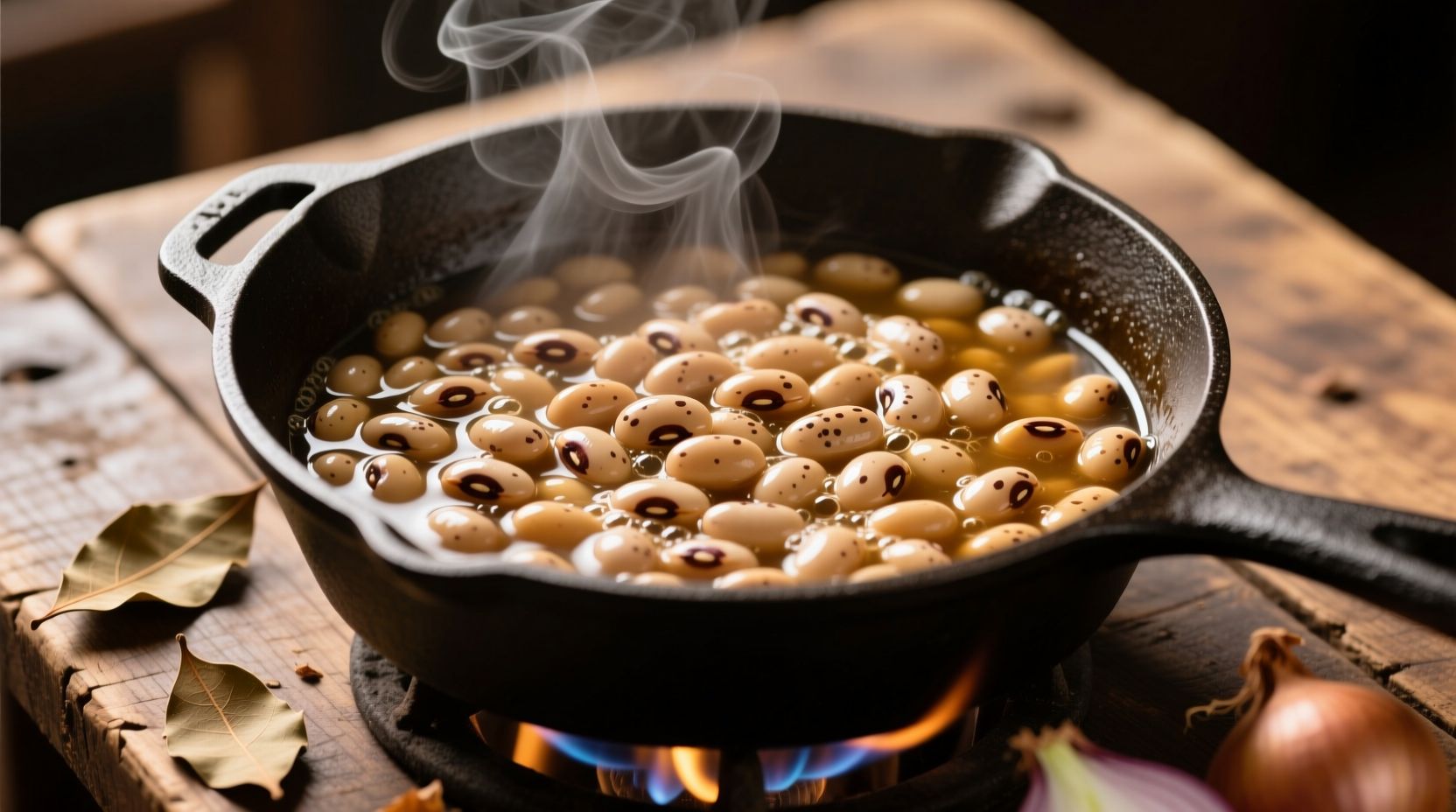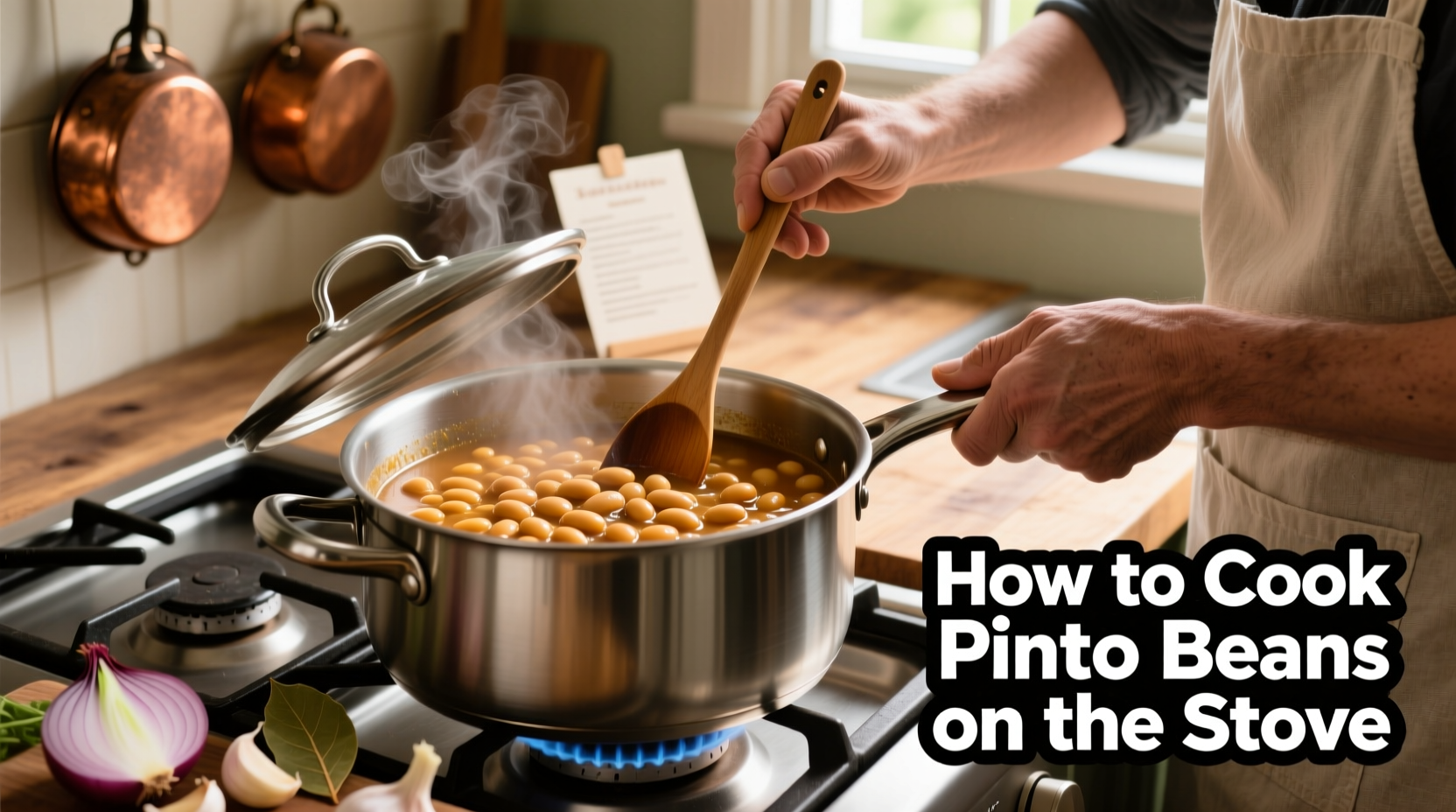Cooking pinto beans from scratch on the stove remains the gold standard for achieving that perfect creamy texture and deep flavor commercial cans can't match. As a Latin American cuisine specialist who's documented traditional bean preparation across the Americas, I've found this hands-on method gives you complete control over texture, salt levels, and flavor development—something crucial for authentic refried beans, soups, and stews.
Why Stovetop Cooking Delivers Superior Pinto Beans
While pressure cookers and slow cookers have their place, the stove offers unmatched precision for cooking pinto beans. The gradual heat application allows complex starches to break down evenly, creating that signature creamy interior with intact skins. Unlike canned beans that often contain preservatives and excess sodium, homemade pinto beans let you control every element of the cooking process.
Essential Preparation: Sorting and Soaking Techniques
Proper preparation separates good beans from great beans. Start by spreading dried pinto beans on a light-colored surface to spot and remove any small stones or damaged beans—a critical food safety step recommended by the FDA.
| Soaking Method | Water Ratio | Time Required | Best For |
|---|---|---|---|
| Overnight Soak | 3 cups water to 1 cup beans | 8-12 hours | Traditional cooking, best texture |
| Quick Hot Soak | 3 cups boiling water to 1 cup beans | 1.5 hours total | Last-minute cooking |
| No-Soak Method | 4 cups water to 1 cup beans | 2.5-3 hours | Emergency situations |
After soaking, drain and rinse beans thoroughly. This removes oligosaccharides—the compounds responsible for digestive discomfort—by up to 20% according to research from the National Center for Biotechnology Information.

Step-by-Step Stovetop Cooking Process
Follow these professional techniques for perfectly cooked pinto beans every time:
1. The Water-to-Bean Ratio Matters Most
Use 3 cups of fresh water or broth for every 1 cup of soaked beans. Never start with cold water—always use hot water from the tap or preheated to maintain consistent cooking temperature. The USDA recommends maintaining a gentle simmer rather than a rolling boil to prevent bean breakage.
2. Timing is Everything
Bring beans to a boil, then immediately reduce to the lowest possible simmer. Cooking time varies based on bean age and altitude:
- Freshly harvested beans: 60-75 minutes
- Store-bought dried beans: 90-120 minutes
- High altitude adjustment: Add 15 minutes per 2,000 feet above sea level
Check for doneness starting at 60 minutes—beans should be tender but not falling apart. A properly cooked pinto bean will split easily when pressed between your fingers but maintain its shape in the pot.
3. Strategic Seasoning for Maximum Flavor
Add aromatics like onion, garlic, and bay leaves at the beginning, but wait to add salt and acidic ingredients until the beans are nearly tender. Contrary to popular belief, salt actually improves texture when added at the right time—about 30 minutes before beans finish cooking. The National Center for Home Food Preservation confirms that properly timed salt enhances bean texture rather than preventing softening.
Troubleshooting Common Pinto Bean Problems
Beans Won't Soften
If your beans remain hard after proper cooking time, they're likely either very old or you're using hard water. Try adding 1/4 teaspoon baking soda to the cooking water—this creates an alkaline environment that helps break down tough bean skins. Note: Use sparingly as too much creates mushy beans.
Excessive Foam Formation
Skim foam during the first 10 minutes of cooking. This removes impurities and saponins that can cause digestive issues. A drop of oil added to the cooking water can minimize foaming without affecting flavor.
Beans Breaking Apart
This usually indicates too vigorous a boil or sudden temperature changes. Maintain a gentle simmer and avoid adding cold ingredients to the pot. If using the quick soak method, ensure beans have cooled slightly before adding to boiling water.
Flavor Enhancement Techniques from Traditional Kitchens
For authentic Latin American flavor profiles, add a small piece of epazote during cooking—it reduces gas production while adding distinctive earthy notes. In Northern Mexico, cooks often include a dried guajillo chili for subtle heat. The traditional "sofrito" base of onions, garlic, and tomatoes added halfway through cooking creates deeply flavorful beans perfect for refrying.
Remember that pinto beans continue to absorb liquid after cooking. Always store them in their cooking liquid for maximum flavor retention. Properly cooled beans will keep for 5 days in the refrigerator or freeze beautifully for up to 6 months.











 浙公网安备
33010002000092号
浙公网安备
33010002000092号 浙B2-20120091-4
浙B2-20120091-4